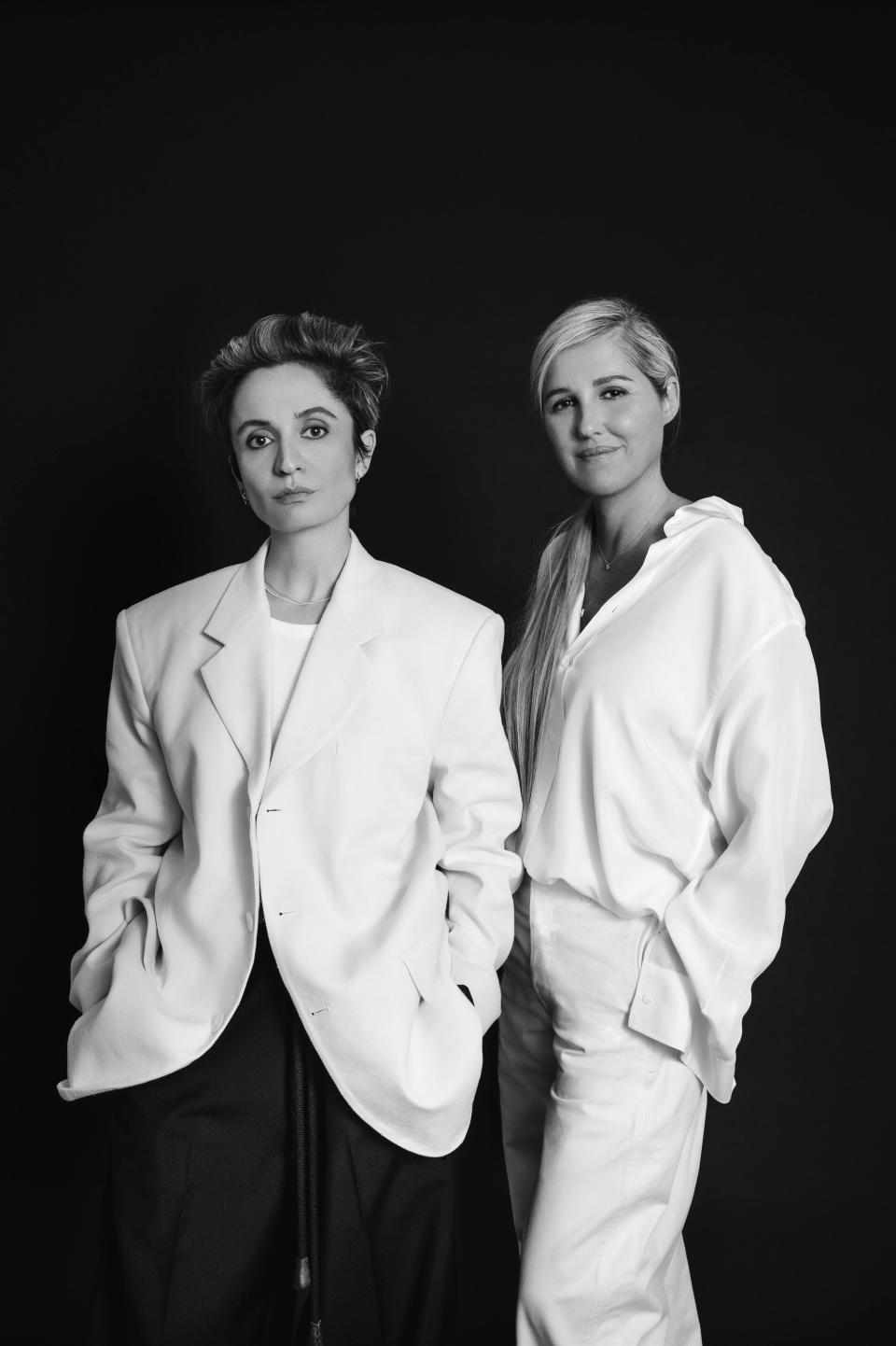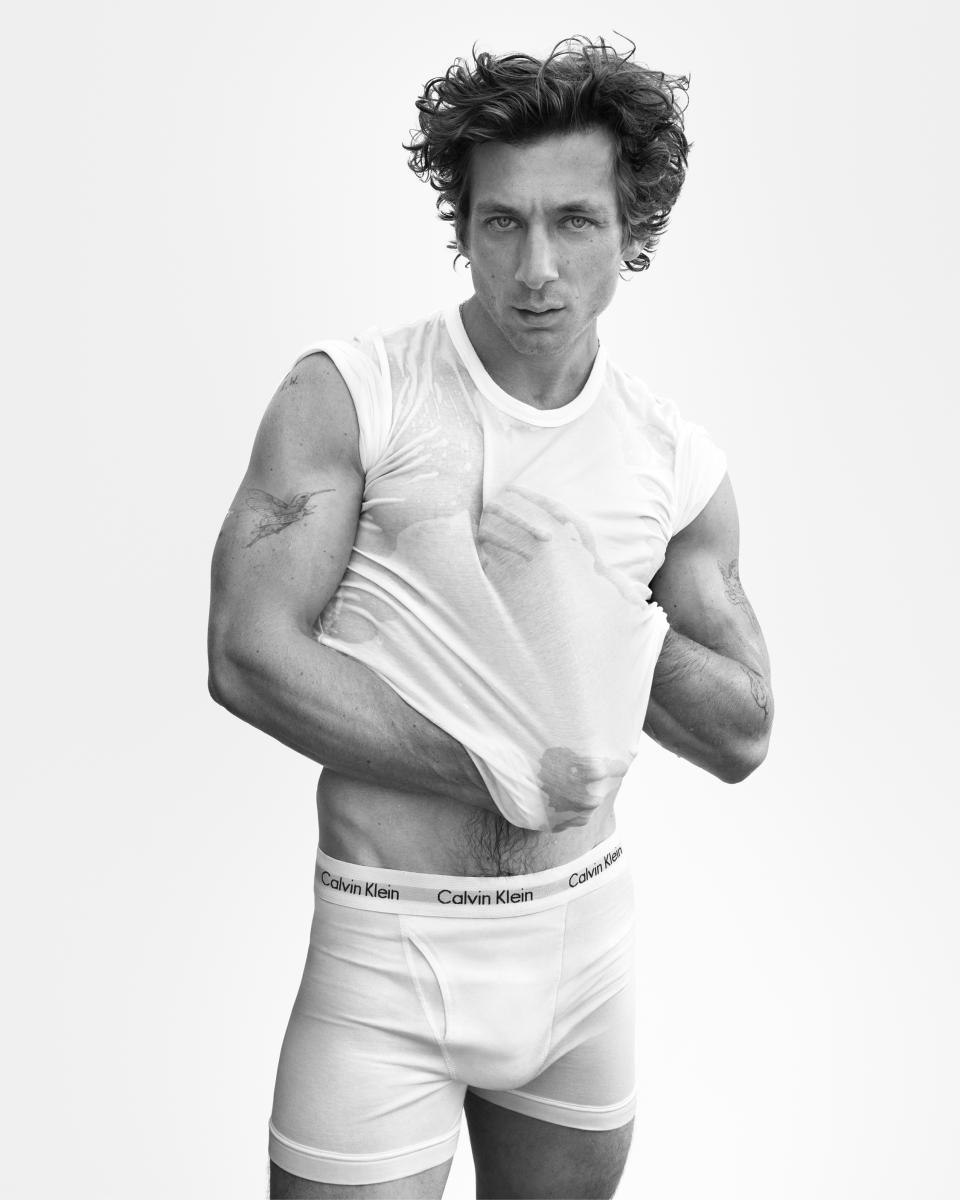What Calvin Klein’s Return to the Runway and High-profile Campaigns Say About Its Business


Calvin Klein — even after a five-year break — knows its way around a catwalk.
And Veronica Leoni, the new creative director of the brand’s now-revived Collection business, comes with the right pedigree. She is a 2023 LVMH Prize finalist with her own brand who has taken turns at The Row, Jil Sander, Celine and Moncler.
More from WWD
EXCLUSIVE: Calvin Klein Unveils New Global Flagship Concept in Paris
Fashion Is Tuning Into Diversity and Inclusion, but Some Signals Remain Garbled
Calvin Klein Recruits Former Gucci Executive to Lead Entertainment Relations
When Leoni brings Calvin Klein back to the runway next year it will be a fashion moment with high-profile reviews and comparisons to the brand’s previous designers — Raf Simons, Francisco Costa and Klein himself.

Like almost everything in fashion, true success will rely on the artistic element, as well as commercial achievements. And Calvin Klein is reentering a tough segment of the market where consumers have money to spend, but also take their fashion very seriously.
“It’s a more competitive environment than it’s ever been in high luxury,” said Robert Burke, chairman and chief executive officer of the Robert Burke Associates consultancy, adding that today’s world is different than the last time the brand played in higher-end fashion. “Can they take market share from The Row? And Phoebe Philo and Bottega, Loro Piana for that matter, and the big groups are incredibly strong and very sophisticated. And then you have today, the Khaites and the Totemes and the Acnes at a more affordable price.”
Calvin Klein posted $3.9 billion in revenues last year, up 3 percent year-over-year, including a 10 percent gain in the international unit and an 8 percent drop in North America, driven by a continued caution in the wholesale business.
Calvin Klein’s ability to really move the needle in terms of high-end market share is an open question — and one that can’t be answered until the line launches — but for parent company PVH Corp., sales aren’t really the point.
The brand’s return to the runway signals how Calvin Klein — from Collection down to underwear — wants to position for the ever more digital and fast-paced future.
Hints of it can be seen in the brand’s powerhouse marketing push, featuring a series of big names, from Blackpink’s Jennie Kim to actor Jeremy Allen White. The campaign featuring White launched on Jan. 4 and lit up the New Year, generating $12.7 million in Media Impact Value in less than 48 hours, according to Launchmetrics.

Calvin Klein famously got off the high-fashion merry-go-round when it shuttered its high-end line in 2019 after spending $70 million to reposition under Simons, but never seeing the requisite return on investment.
Since then, Calvin Klein has been without its fashion halo — the more refined and more expensive looks that shine down brightly on other categories like underwear and jeans.
It’s not an unusual model, where high-end fashion makes up a relatively small part of the business. At Tom Ford, where the runway looks are now designed by Peter Hawkings, a lot of the money is made from beauty products (just ask The Estée Lauder Cos., which bought the brand in 2022 with an enterprise value of $2.8 billion) and from eyewear, under license to Marcolin. The fashion side is licensed to Ermenegildo Zegna Group.
Eric Beder, a veteran retail analyst at Small Cap Consumer Research, said flashy and expensive runway shows are “always the easiest to cut” for a company focused on more immediate financial returns.
“In the longer run, you lose some of your cachet when you do that,” Beder said. “The fact that they would go back and do a show and do these pieces, it’s not to make money. It’s to further cement their reputation internationally.”
Fashion shows have only become more potent in the digital age as they ricochet from screen to screen around the globe.
Tommy Hilfiger, which is also owned by PVH but never gave up its halo, continues to make a big fashion week splash. Its last outing resulted in more than 3,000 PR placements and, according to the brand’s research, reached 6 billion potential readers.
Shows today offer a chance to make an even bigger statement.
“For a large company like Calvin Klein with a global international brand, the [fashion] show can tie together all those pieces into a worldwide message,” Beder said. “Yes, it costs money. I would almost argue that bringing stuff like that back is a sign that management has confidence in their direction and how to leverage it.
“You’re basically putting yourself out there as, ‘this is our goal, this is our vision’,” he said.
And the return of Calvin Klein Collection is just a part of a much broader vision at PVH, where chief executive officer Stefan Larsson is in the midst of a thorough, multiyear reworking of the company.
Larsson — who came to PVH from H&M by way of Old Navy and Ralph Lauren — sees everything through the lens of his PVH+ strategic plan, which aims to engage consumers with high-impact marketing, hero products and a demand-driven supply chain.
That means, in part, carrying less inventory and reacting quickly to the marketplace. It’s a page right out of the fast fashion playbook, which is baked into Larsson as well as Calvin Klein’s global brand president Eva Serrano, who hails from Zara. But any lingering doubts about whether or not PVH was going the way of fast fashion should be put to rest by Calvin Klein’s move back into the Collection business.
The brand is also giving its brick-and-mortar operation some love and, on Friday, will open a 6,500-square-foot flagship on the Avenue des Champs-élysées in Paris, just in time for the Olympic Games. A new New York flagship is in the works as well after the company closed its Madison Avenue store in a bid to go more digital.
At the same time, the Collection revival really puts the changes at Calvin Klein on the map.
In addition to operating with less inventory, moving more quickly and leaning into marketing, the brand is in the process of reclaiming its licenses for the U.S. wholesale business from G-III Apparel Group.
As that U.S. wholesale business reestablishes itself, it will have the Collection business to guide the way.
Brian Ehrig, a partner in Kearney’s consumer practice, said the brand is already part of the zeitgeist due to its underwear ads.
Calvin Klein Collection could help change that.
“This is more about being relevant and going for those viral moments, being in the public discourse, having people excited about your brand more so than it’s about driving sales,” Ehrig said.
“At the outset, it’s a marketing push,” he said of the Collection business. “Now, whether it turns into something meaningful, anybody’s guess, but typically there’s very little volume” in those types of collections.
Just about everything is on the move at PVH as the company continues to meld fast-fashion operating ideals with luxury glitz, adopting a new positioning in the market.
Next year on the catwalk, it should become more clear just where it’s all leading for Calvin Klein.
The Bottom Line is a business analysis column written by Evan Clark, deputy managing editor, who has covered the fashion industry since 2000. It appears every other Thursday.
Celebrities in Calvin Klein Ad Campaigns Through the Years, Photos



Launch Gallery: Celebrities in Calvin Klein Ad Campaigns Through the Years, Photos
Best of WWD